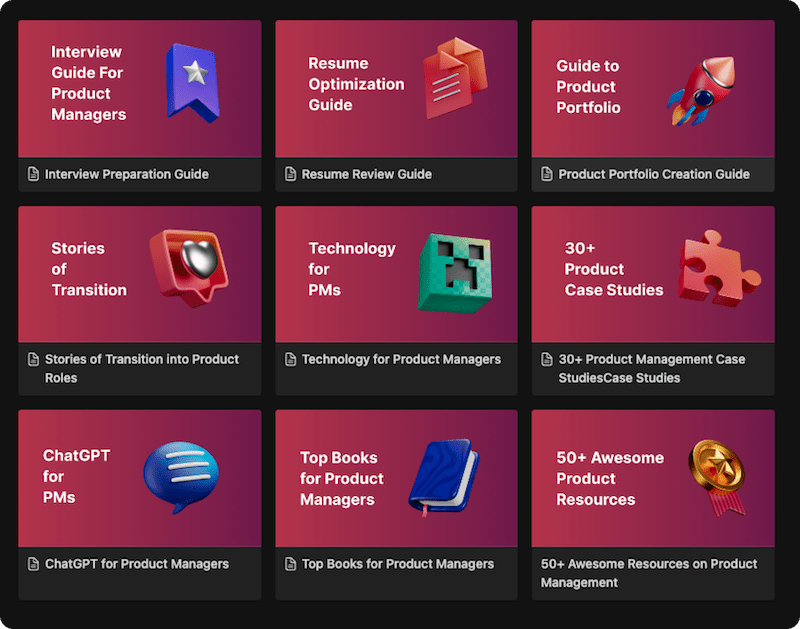As a product manager, have you ever looked at your Analytics & Metrics and seen a flat or declining North Star Metric, despite your user base growing? You’re getting more users, but engagement is stagnant. This is a classic sign that you’re treating your entire user base as a single, monolithic entity. The reality is, your users are a diverse crowd with different needs, motivations, and behaviors. To truly move the needle, you need to stop talking to the “average user”—who doesn’t really exist—and start understanding the distinct groups within your audience. This is where User Segmentation becomes your superpower. It’s the practice of moving from a one-size-fits-all approach to a precise, empathetic strategy that speaks to the right users, in the right way, at the right time.
This guide is designed to make you a master of User Segmentation. We will take you from the fundamental definition to a pro-level understanding of how to create and leverage segments to drive your Product Strategy. You will learn the core models of segmentation, a practical step-by-step process for implementation, and how to avoid common pitfalls. By the end, you’ll be equipped to use segmentation not just as an analytical exercise, but as a strategic tool to build better features, personalize the Customer Experience, and achieve meaningful Product-Led Growth (PLG).
What is User Segmentation?
User Segmentation is the practice of dividing a broad user base into smaller, distinct groups of users who have similar characteristics, behaviors, or needs. Instead of viewing your users as one large, uniform crowd, segmentation allows you to create specific Cohorts. These segments can be based on a wide range of attributes, from demographics like age and location to in-app behaviors like feature usage or purchase history. The ultimate goal of user segmentation is to enable product teams, marketers, and designers to tailor their efforts—be it product features, marketing campaigns, or In-App Messaging to the specific requirements of each group, leading to a more relevant and impactful user experience.
Definition & Origin: From Madison Avenue to Silicon Valley
The concept of segmentation isn’t new. It has its roots in mid-20th-century marketing. The term “market segmentation” was first coined by Wendell R. Smith in his 1956 article “Product Differentiation and Market Segmentation as Alternative Marketing Strategies.” Smith argued that instead of trying to sell a single product to everyone, businesses could be more effective by targeting specific segments of the market. This was a revolutionary idea that shifted marketing from a mass-market approach to a targeted one.
Fast forward to the digital age. With the explosion of data available from software and apps, this marketing concept was adopted and supercharged by product teams. They realized they could apply the same principles not just to marketing, but to the product development process itself. This gave rise to User Segmentation, a practice that uses rich product data to understand and build for the diverse needs of a digital user base.
Benefits & Use-Cases: The Strategic Impact of Segmentation
For a product manager, effective user segmentation is a game-changer.
- Drives a Personalized Customer Experience: Segmentation allows you to tailor User onboarding flows, feature announcements, and support, making each user feel like the product was built just for them.
- Informs the Product Roadmap: By analyzing the needs of your most valuable segments (e.g., “Power Users”), you can make data-driven decisions on your Product Roadmap and Feature Prioritization.
- Improves User Adoption and Retention: You can identify users who are at risk of churning (e.g., “Inactive Users”) and proactively engage them with targeted campaigns or support, boosting your Retention Rate.
- Optimizes Marketing and Go-To-Market (GTM) Strategies: Segmentation helps marketing teams create more effective messaging and target the right channels for each user group, lowering the CAC (Customer Acquisition Cost).
- Enables Effective A/B Testing: You can roll out a new feature to a specific segment first (Beta testing) to test its impact before a full launch, or run experiments targeted at improving a KPI (Key Performance Indicator) for a specific group.
How It Works: A Step-by-Step Guide to User Segmentation
A successful segmentation strategy is a continuous cycle of data collection, analysis, and action.
The 4 Core Types of User Segmentation
Before you begin, it’s crucial to understand the four main ways you can group users.
- Demographic Segmentation (Who they are): This is the most basic form and includes attributes like age, gender, income, job title, and company size.
- Geographic Segmentation (Where they are): This groups users by their physical location, such as country, state, city, or even climate.
- Psychographic Segmentation (Why they act): This is more nuanced and groups users based on their lifestyle, values, interests, and personality traits.
- Behavioral Segmentation (What they do): For product managers, this is often the most powerful type. It groups users based on their direct interactions with your product: features used, login frequency, purchase history, device type, etc.
A 5-Step Implementation Process
- Define Your Goal: Start with a clear question you want to answer. Are you trying to increase conversion, reduce churn, or drive adoption of a new feature? Your goal will determine what data you need.
- Collect the Right Data: Gather data from multiple sources.
- Product Analytics tools: (e.g., Mixpanel, Amplitude) for behavioral data.
- CRM systems: for customer and company information.
- Surveys and Feedback: (using tools like Qualtrics or directly via a Voice of Customer (VOC) program) for psychographic data.
- Choose Your Segmentation Model and Analyze: Based on your goal, select the right type of segmentation. For example, to increase engagement, you might use behavioral segmentation to create groups like “Daily Actives,” “Weekly Actives,” and “At-Risk Users.” Use your data tools to create these Cohorts.
- Create and Activate the Segments: Give each segment a clear, descriptive name. Now, put them to work. This could mean:
- Creating a targeted email campaign for “Users Who Haven’t Tried Feature X.”
- Designing a specialized User onboarding flow for “New Users from Enterprise Companies.”
- Prioritizing bug fixes that disproportionately affect your “Power Users on iOS.”
- Test, Measure, and Iterate: User segmentation is not a one-time project. Continuously monitor the performance of your segments. Are your targeted campaigns working? Are users moving from less desirable segments (e.g., “Inactive”) to more desirable ones (e.g., “Engaged”)? Use these learnings to refine your segments and strategies.
Mistakes to Avoid: Common Segmentation Sins
- Creating Too Many Segments: If you have 50 different segments, it becomes impossible to take meaningful action on any of them. Start with a few, high-impact segments.
- Using Vague or Unactionable Segments: A segment like “Users Who Like Blue Buttons” is useless. A good segment should allow you to take a specific action.
- Forgetting to Update Segments: User behavior changes. The segments you created six months ago might not be relevant today. Revisit them regularly.
- Ignoring Smaller Segments: Sometimes a small but highly engaged segment can provide valuable insights into what a future mainstream audience might want.
Examples / Case Studies: Segmentation in the Real World
- Netflix (Behavioral Segmentation): Netflix doesn’t just care about your age or location; they care about what you watch. Their recommendation engine is a masterclass in behavioral segmentation. They create micro-segments based on viewing history, genres watched, time of day you watch, and even what you almost watched. This allows them to create a hyper-personalized homepage for every single user, driving massive engagement and a high Retention Rate.
- Spotify (Psychographic & Behavioral Segmentation): Spotify creates its famous “Wrapped” year-in-review and personalized playlists like “Discover Weekly” by segmenting users based on their listening habits (behavioral) and inferred musical tastes (psychographic). This makes the user feel understood and delivers immense personal value.
- Mailchimp (Behavioral & Demographic Segmentation): Mailchimp offers different pricing tiers and onboarding flows based on the size of a user’s business (demographic) and their level of marketing sophistication (behavioral). A user with 100,000 contacts (“Enterprise User”) has very different needs from a user with 500 contacts (“Small Business Owner”), and Mailchimp’s product experience reflects this.
Related Concepts & Comparisons
User Segmentation vs. User Persona
These two concepts are deeply connected but distinct.
- User segmentation is the quantitative process of grouping users based on shared data points. It tells you what groups exist and how many users are in each.
- A User Persona is the qualitative process of creating a fictional character to represent a specific segment. It gives a human face to the data, telling you who is in the group and why they behave the way they do.
Analogy: Segmentation is like identifying that you have a group of 10,000 users who log in every day. A persona is creating “Power User Paul,” a character who represents that group, complete with a backstory, goals, and frustrations. You use segmentation to find the group, and a persona to understand them.
Conclusion
In a competitive market, the “one-size-fits-all” product is a relic of the past. User Segmentation is the foundational practice that enables a modern, personalized, and effective Product Strategy. It elevates you from making broad assumptions about your “users” to having a deep, data-informed understanding of your “Power Users,” your “Newbies,” your “At-Risk Customers,” and more. This clarity is transformative. It allows you to focus your resources, build features that truly matter, and communicate with your users in a way that resonates and builds loyalty.
As a product manager, embracing user segmentation is not just about crunching numbers; it’s about building empathy at scale. It’s the bridge between what your data is telling you and what your users actually need. By continuously analyzing, testing, and acting on your user segments, you create a powerful engine for sustainable growth. You move from simply reacting to the market to proactively shaping the Customer Experience for the specific groups that will determine your product’s success. Start segmenting today, and you’ll be on the path to building a product that feels personal, valuable, and indispensable to every user.
FAQ’s
Start with your goal. If you want to personalize marketing messages, start with demographic and behavioral data. If you want to understand why users churn, you’ll need to dig into psychographic and behavioral data. Often, the most powerful segments are a combination of types.
It depends on your needs. Product Analytics tools like Mixpanel and Amplitude are excellent for behavioral segmentation. CRMs like Salesforce are great for demographic and firmographic data. Survey tools like Qualtrics or SurveyMonkey can help you gather psychographic insights.
There’s no magic number, but a good rule of thumb is to only create segments that you have the resources to act upon. If you can’t create a tailored experience or message for a segment, it’s not a useful segment. Start with 3-5 key segments.
A cohort is a specific type of behavioral segment where all users share a common time-based event. The most common cohort is users who signed up in the same week or month. Cohort Analysis tracks these groups over time to see how their behavior changes, which is especially useful for measuring long-term retention. All cohorts are segments, but not all segments are cohorts.
Learn better with active recall quiz
How well do you know What is User Segmentation? Let’s find out with this quick quiz! (just 10 questions)


